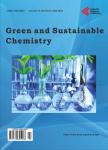Towards Biorefinery Production of Microalgal Biofuels and Bioproducts: Production of Acetic Acid from the Fermentation of <i>Chlorella</i>sp. and <i>Tetraselmis suecica</i>Hydrolysates
Towards Biorefinery Production of Microalgal Biofuels and Bioproducts: Production of Acetic Acid from the Fermentation of <i>Chlorella</i>sp. and <i>Tetraselmis suecica</i>Hydrolysates作者机构:Bioprocess Technology Divisions School of Industrial Technology Universiti Sains Malaysia Pulau Pinang Malaysia Department of Chemical Engineering Monash University Victoria Australia Crop and Soil Science Research Centre (SS) Malaysian Agriculture Research and Development Institute (MARDI) Serdang Malaysia Department of Chemical and Biomolecular Engineering The University of Melbourne Victoria Australia
出 版 物:《Green and Sustainable Chemistry》 (绿色与可持续化学(英文))
年 卷 期:2017年第7卷第2期
页 面:152-171页
学科分类:1002[医学-临床医学] 100214[医学-肿瘤学] 10[医学]
主 题:Microalgal Cultivation Acetone-Butanol-Ethanol Fermentation Acetic Acid Microalgal Biorefinery Gompertz Model Biochemical Biofuels
摘 要:Successful commercialization of microalgal bio-industry requires the design of an integrated microalgal biorefinery system that facilitates the co-production of biofuels, high-value products and industrial chemicals from the biomass. In this study, we investigated the use of sugar hydrolysate obtained from enzymatic saccharification of microalgal biomass (Chlorella sp. and T. suecica) as fermentation feedstock to produce industrially important chemicals, in particular acetic acid and butyric acid. By using hydrolysate with low sugar content as substrate for the anaerobic fermentation (1.5 - 2.4 g/L), we were able to prevent the bacterium C. saccharoperbutylacetonicum from activating its solventogenesis pathway. As a result, the fermentation process generated a product stream that was dominated by organic acids (acetic acid and butyric acid) rather than solvents (butanol, ethanol and acetone). Acetic acid constituted up to 92 wt% of Chlorella’s fermentation products and 80 wt% of T. suecica’s fermentation products. For T. suecica, the fermentation consumed almost all of the sugar available in the hydrolysate (up to 92% of initial sugar) and produced a reasonable yield of fermentation products (0.08 g fermentation products/g sugar). The Gompertz equation was successfully used to predict the formation kinetics of acetic acid and other fermentation products across both species. The results in the study demonstrate the production of industrially important chemicals, such as acetic acid and butyric acid, from the fermentation of microalgal sugar. The process described in the study can potentially be used as a value-adding step to generate biochemicals from cell debris in an integrated microalgal biorefinery system.



